Learning an instrument is a lifelong journey, but it's not only about technique and tone. It's also about understanding how the instrument in your hands was made. Nowhere is this more true than with acoustic guitars. Knowing the parts that comprise the whole means stepping into that space where craftsmanship meets engineering.
Whether you've had an acoustic in hand for decades or are just beginning your adventure with the instrument, this guide dissects an acoustic guitar from tip to toe and explores what makes each part tick.
Tuning Pegs: Headstock Position and Mechanics
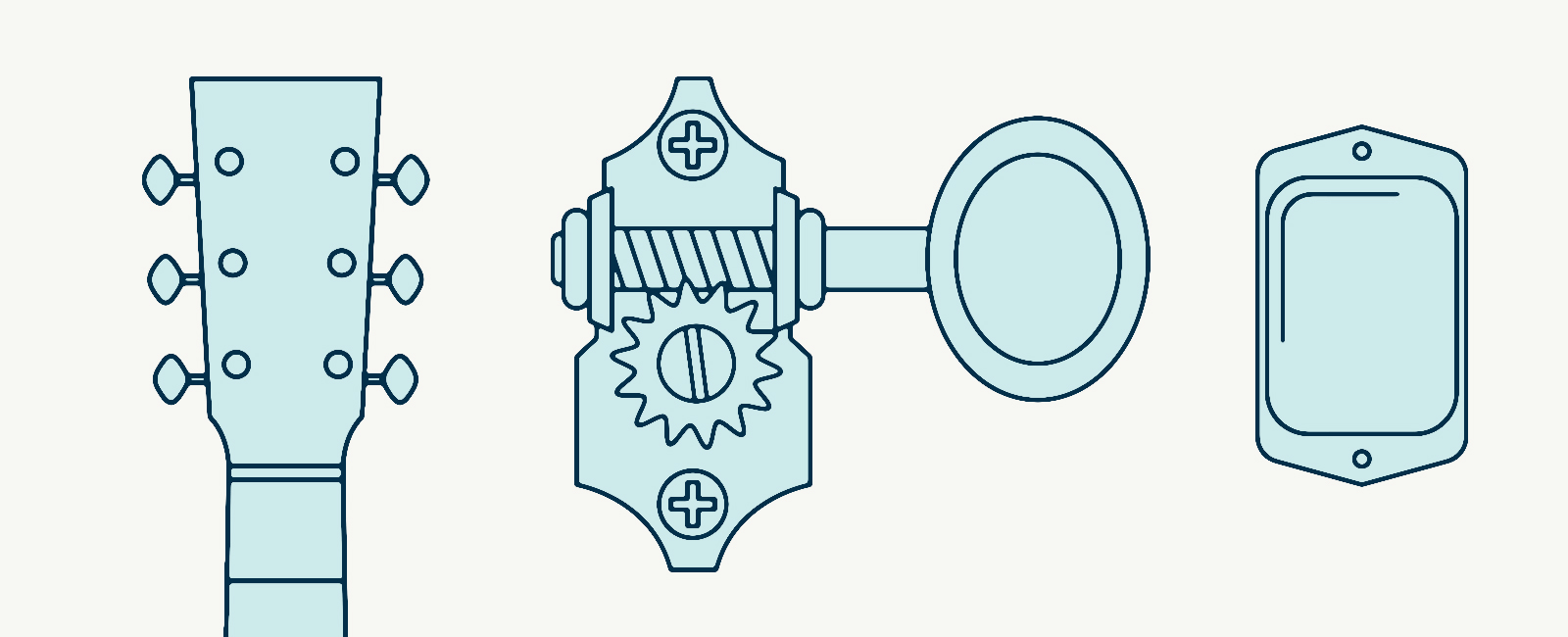
Unlike electric guitars, which have a variety of configurations of the locations for tuning pegs, the vast majority of acoustic guitars are split with three up top and three below. This is in part due to heritage but also in part to physics: Since acoustic guitars typically have heavier-gauge strings, the distribution of tension on the horizontal axis of the neck helps maintain intonation and minimize torsion.
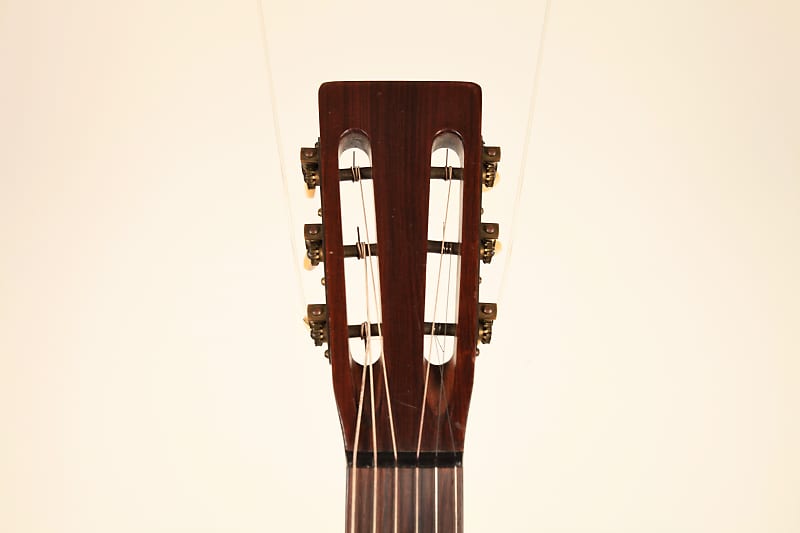
Acoustic guitars do, however, have more options on the orientation and mechanics of tuning pegs. Closed back machine heads are more standard. Some builders retain the classic feel and function of open-back designs.
The material construction of tuning pegs varies widely, though stainless steel is the most common. Some designs may also integrate more tonal materials, such as brass on the tuning barrels for added sustain and warmth.
Old-school acoustics and vintage restoration instruments may have what is becoming a rarity in tuner-peg positions: With tuning machines and pegs set perpendicular to the headstock itself, the tuning pegs extend through the headstock, allowing for a naturally arcing string-wind.
Nuts: Materials and Dimensions
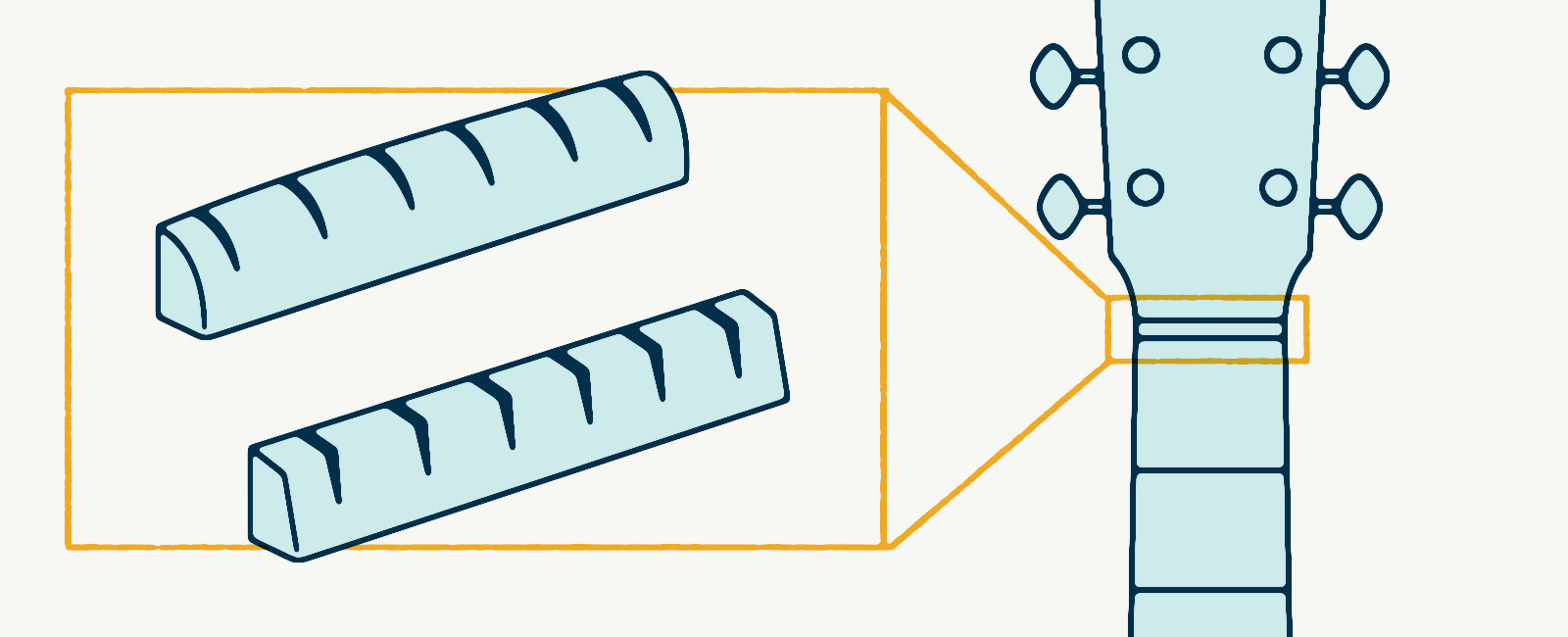
The next component your string touches is the nut, which cradles the strings as they stretch down the fretboard. Though slender and easily overlooked, the nut is an essential ingredient in the tonal quality of your acoustic instrument. The shape and size of the nut will depend on the design of your guitar.
Arguably, it's the materials it's made of that matters the most. Traditionally, animal bone was the go-to option for rich and full tone. However, advances in synthetic materials allowed for other innovations. These days some of the more common nut materials include synthetic ivory or bone, such as those in the line of Graph Tech TUSQ nuts.
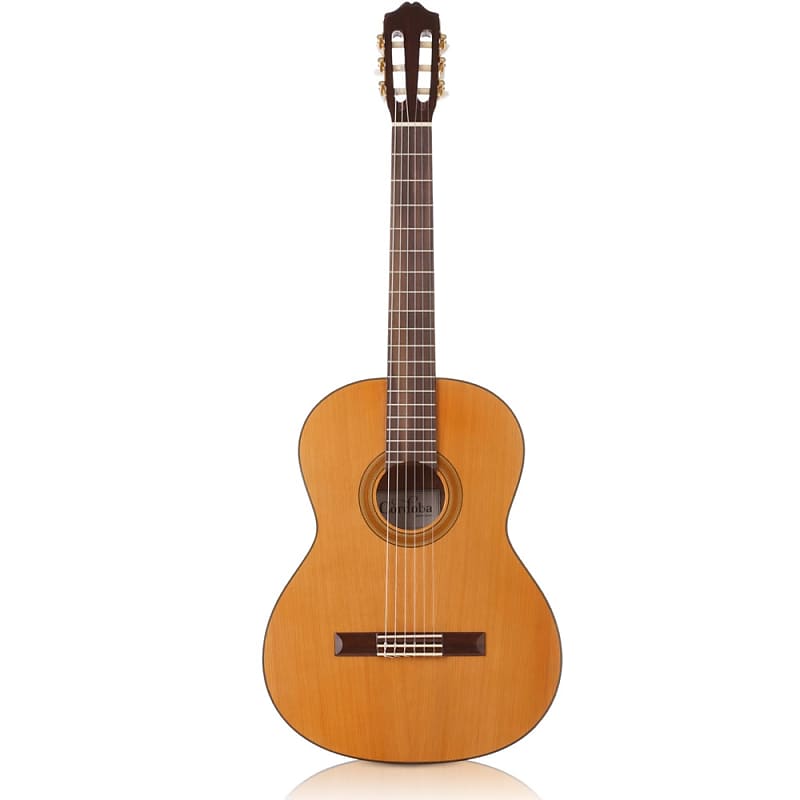
Though it's one of the smallest components of your guitar, nut dimensions vary and make a massive difference in tone and playability. The height of the nut, as well as the depth of notches for strings, is one of the main variables securing your instrument's intonation and string height.
The width of the nut too matters as it establishes a main measurement of the fretboard. Typically, steel-string acoustic nut widths range from 41mm (1.61" or 1 5/8") to 47mm (1.85"), with many coming in at the middle around 43–44mm (from 1.6875" or 1 11/16" to 1.73" or 1 3/4"). Classical or nylon-string guitars are typically wider at the nut, and are commonly 51mm (2") or larger.
A difference of a few millimeters can drastically change how a guitar feels and plays. Depending on the size of your hand and your preferred style of playing, you may prefer a smaller or wider nut, with larger sizes allowing more space for fingerpicking styles.
If you're buying a new instrument, the design and crafting crews have likely set the exact specifications for optimal performance. If, however, you're looking to do a DIY nut upgrade, be sure to do your homework on the size and spacing to ensure your upgrade helps your instrument become even more of its truest self.
Necks: Components and Construction
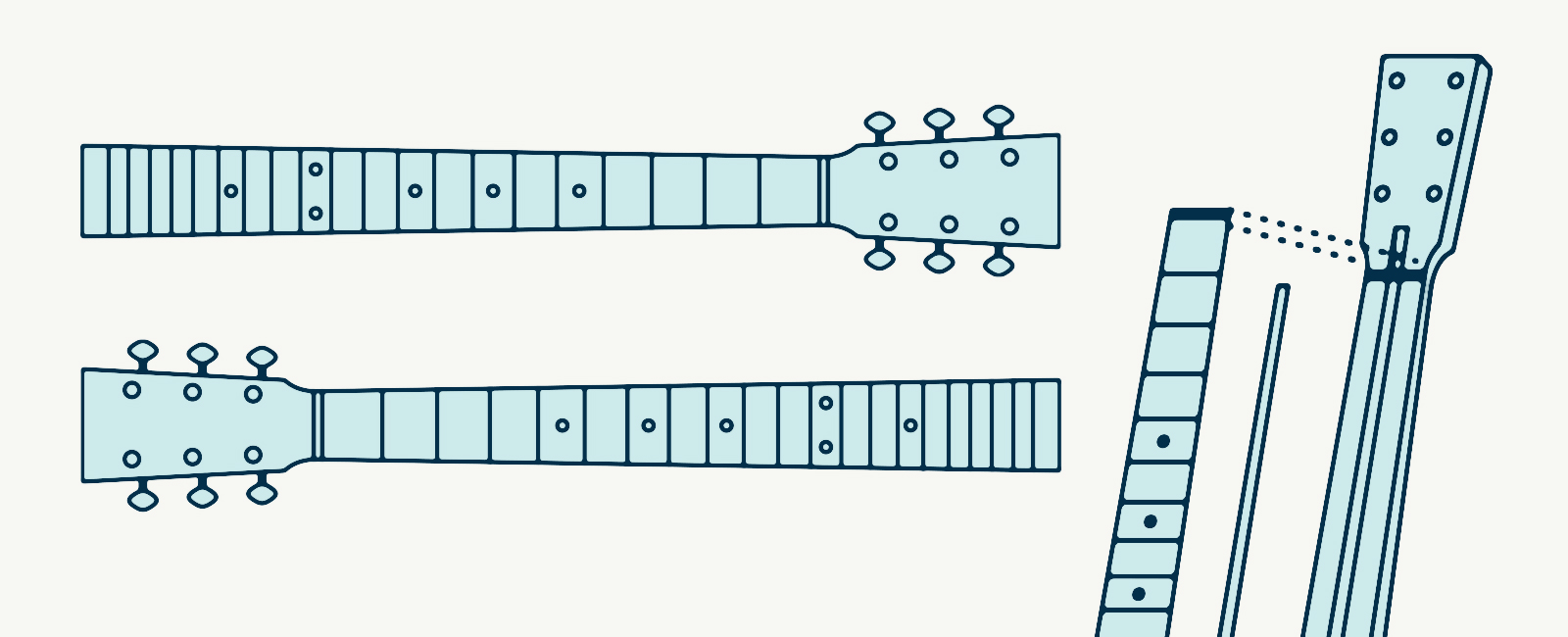
Once free of the nut, your strings run down the neck. This portion of your instrument consists of up to four elements. Some you see, some you don't. Yet all work together to provide a tonal runway for your fretting fingers.
Your neck is likely constructed of at least two pieces of wood. The first is a slab out front that we call the fretboard. The vast majority of acoustic fretboards are made of darker-colored hardwoods—such as rosewood or ebony—which offer both durability and impart tonal character. The fretboard is joined to the neck itself, which is that contoured piece of wood your palm cradles in the back. Here too, a variety of materials abound. While maple or mahogany is common, acoustic builders may also match neck materials with those of the body.
When your neck and fretboard are matched up the shape and dimensions are strategically set. Neck shapes are often brand-specific but generally fall into a range of hard to soft "C" or "V" profiles.
The other measurement that matters for neck profile is the radius of the fretboard. In short, while some classical or vintage acoustics have prairie flat fretboards, most have degrees of curve to them for increased playability. Acoustic guitars typically will have fretboard radius of 10", 12", or 16", with the smaller numbers reflecting a more accentuated arc.
Finally, the scale-length of any guitar is also an important measurement and something to consider when buying an acoustic. The scale-length is the distance between the nut and the bridge. Generally, described as "short" or "long" scales, the measurements here generally range from 24" to 25.5" or longer. Gibsons famously use a 24.75" scale-length (though it has varied somewhat over time), while Martin's standard scale-length is 25.34".
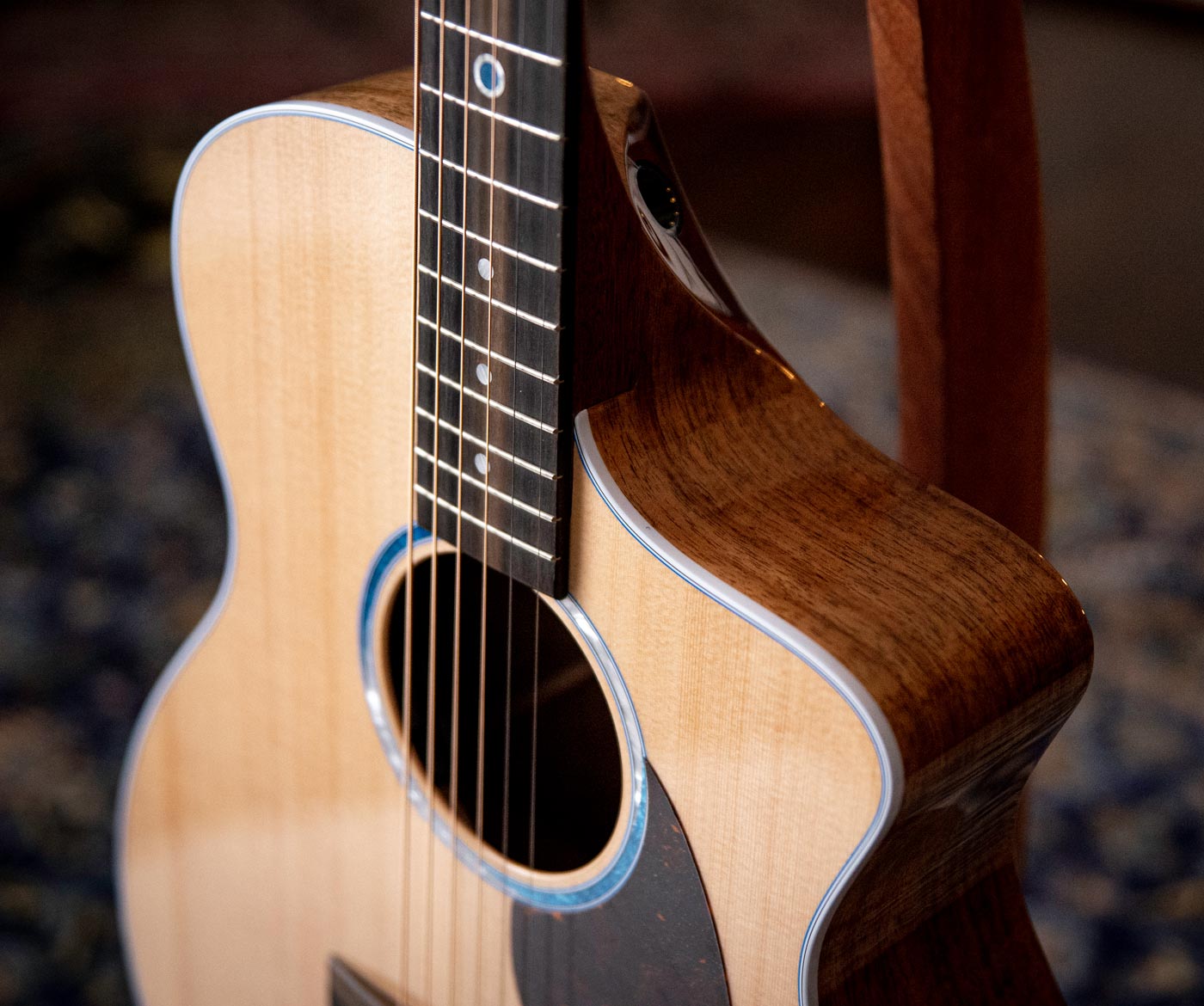
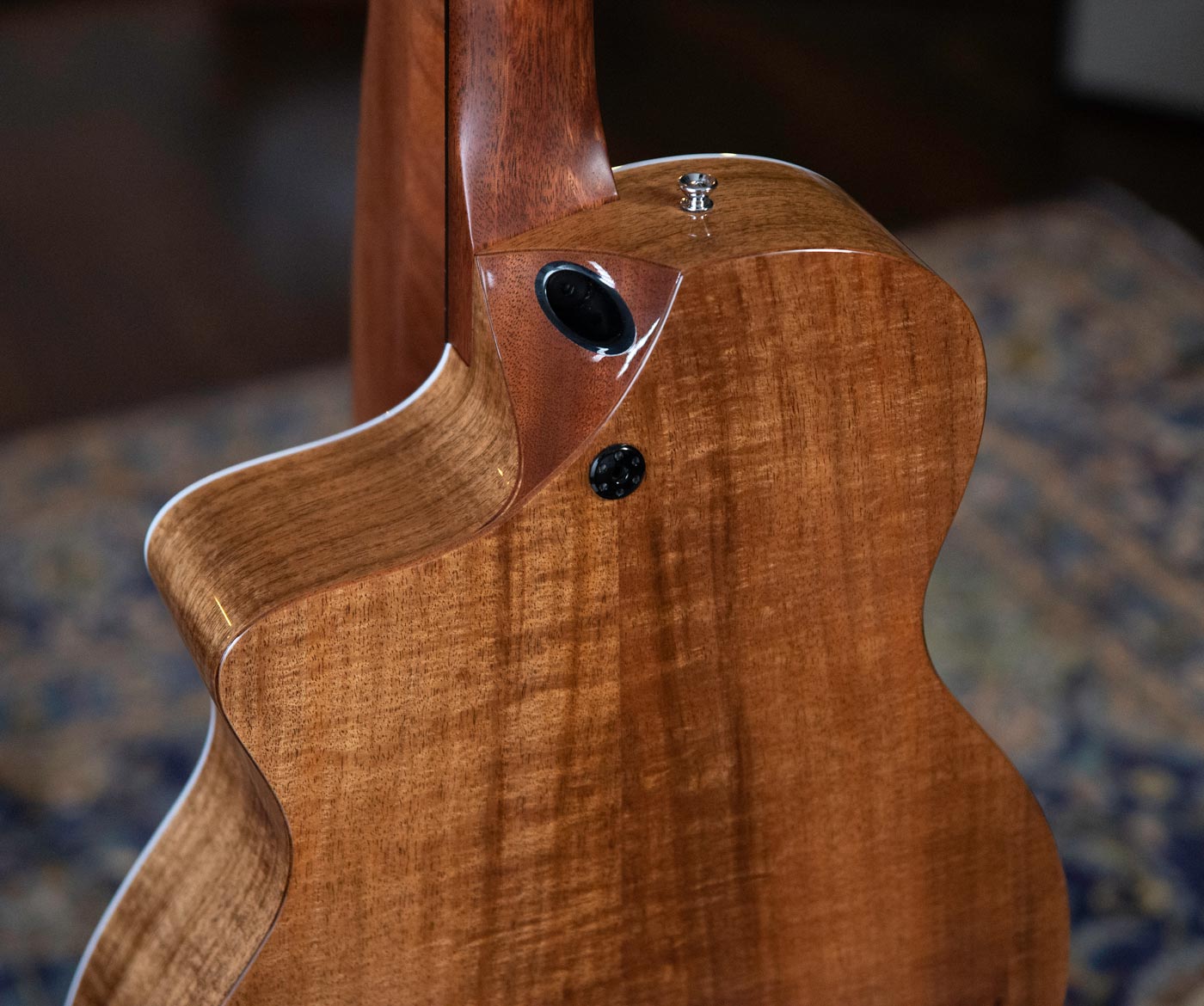
The neck also has up to two metal components that complete the ensemble. Of course, there are the frets out front. These come in various sizes, both in width and height. While modern electric guitars typically range from 22 to 24 frets, acoustic guitars typically have fewer, with most landing in the 20-fret range. In terms of material, you can expect to find brass, nickel, or steel, with the former typically found on vintage instruments.
The second metal component is under the hood: the truss rod. While not all acoustics will have one, truss rods are inset within the neck and typically run from the heel to just under the nut. As you change to lighter or heavier gauges of strings, truss rods ensure the right balance of rigidity and flexibility so your neck doesn't bow. Tinkering with a truss rod is an art and science. Typically adjustments are made by removing a small truss rod cover right above the nut on the front face of the headstock.
When all of those components are brought together, your acoustic guitar neck is a material and tonal combo that connects at the heel to the body.
Body: Shapes, Woods, and Construction
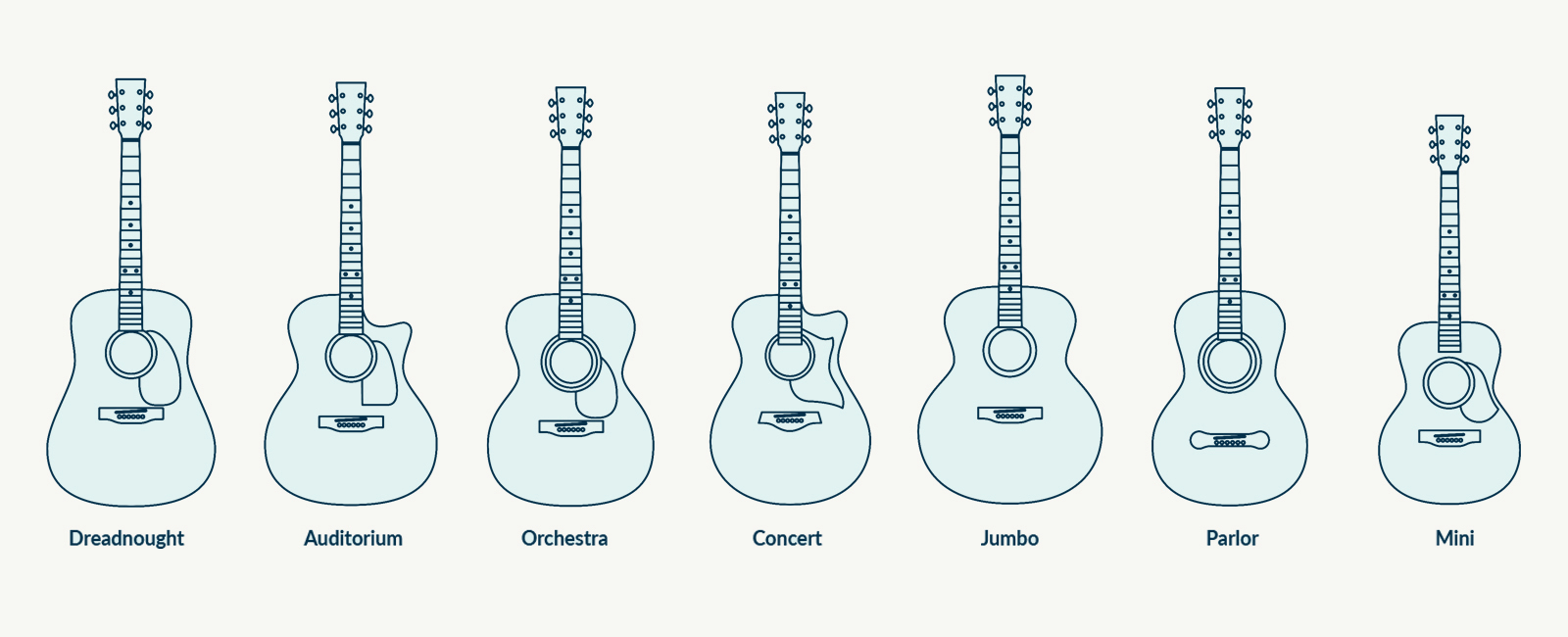
Luthiers have developed a deep catalog of acoustic body designs that are the result of endless variations and innovations of three key elements: shapes, woods, and construction.
Since the body of your acoustic functions as a resonant chamber, it's no surprise that the dimensions and shape of the body make a huge difference on sound projection and sustain. There are a number of shapes that contribute to a growing typology of acoustic guitars. But the most common categories include the following:
Dreadnought: This iconic shape with large shoulders and large lower-ends are your all-around strumming and picking machines.
Grand Auditorium: This design takes the best of the dreadnought but modernizes it by narrowing the waist of the guitar slightly and at times enhancing fretboard reach with a cutaway.
Orchestra: These feature an almost shrunken-dreadnought type body that results in more maneuverability and brighter tones ideal for finger-picking.
Concert: This throwback to the mid-19th century is a mid-size body that champions EQ in the mid- and upper-ranges, making it ideal for cutting through any unplugged session.
Jumbo: The name says it all. This one looks like a dreadnought that put on a few pounds but uses that new space to bellow out still more bottom end and bigger sounds.
Parlor: Small but bold, these designs are known for strong projection of mid-range tones.
Mini: These compact builds are ideal for mobility or smaller players.
When it comes to woods, acoustic guitar builders have experimented with just every material on the green earth. It's common to feature a different tonewood for the top of the guitar—known as the soundboard—from the back and sides.
Top woods like spruce or cedar impart a pop to the sound as it resonates and escapes the sound hold. The back and sides are commonly constructed over hardwoods known for deeper tones, such as mahogany or rosewood. Of course, some designs opt for a single wood for tops and sides, like koa, to give the guitar an all-encompassing tonal voice.
With the shape set and woods selected, construction is where craftsmanship, innovation, and budget intersect in acoustic designs. Bodies will either be constructed of laminated or solid woods. The former are made of layered and bound wood, which is generally a more economical approach. Solid tops and backs are less friendly on the pocket book but often result in richer tones and resonance.


The bracing of the body—that inner skeleton of the body that seems to ingest all those picks dropped through the soundhole—also affects sound and provides space for luthier's to develop the DNA of their design. Even more than body shapes, bracing "patterns" are diverse, with X-bracing and A-bracing common in steel-string acoustics, and fan-bracing or lattice-bracing common in classical guitars.
These patterned wood reinforcements are most often constructed of spruce. Because the patterns are bound to the body they also play a role in transferring vibration within and out of the guitar. That is, they're literally unseen and unsung heroes merging sonics and physics that help get the sound your fingers play to your inner ear.
No other instrument on earth is as versatile as the acoustic guitar. It's a staple on stage and in the studio, has annual gigs for months on end by summer campfires, is both the gateway for new players and tool for seasoned songwriters, and is equally at home in a Sunday service or resistance march. Whether unplugged or electrified, the endless possibilities for configuring the above components make acoustic guitars both classic and forward-thinking.
